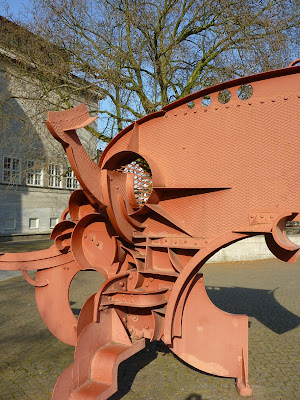
The
historic warehouse district (
Speicherstadt) of Hamburg, northern Germany, is an architectural cluster of brownish-red brick buildings between the
Binnenhafen and
Norderelbe. The photography above shows the bridge, called
Fußgängerbrücke Kehrwiedersteg, which connects pedestrians, coming from downtown, with the harbor district. A network of near-sea-level roads and elevated pedestrian walkways take visitors and locals through the warehouse canyons and beyond: for example, to the construction site of the new river-front philharmonic auditorium, the
Elbphilharmonie, also elevated and rising—with its shiny-glass-waved facades—above the old world of bricks.
Being elevated in Hamburg's HafenCity is not just a matter of prestige or better vistas, it will be a matter of safety and survival during flooding. According to an informative panel next to the
Kehrwiedersteg in front of the main dyke line,
flooding risk is highest during the so-called
storm tide season from the middle of September until the end of March. Warnings will be issued by district authorities, if a storm tide is expected. During all other times, you can immerse yourself into the full experience of the ghostly, yet vividly awake
Speicherstadt with all its warehouses; some still used as storehouses, but many of them restored and turned into office space, shops, restaurants, museums, theaters and other attractions. Then and now, the breeze of the world is wavering through this otherworldly neighborhood.

























